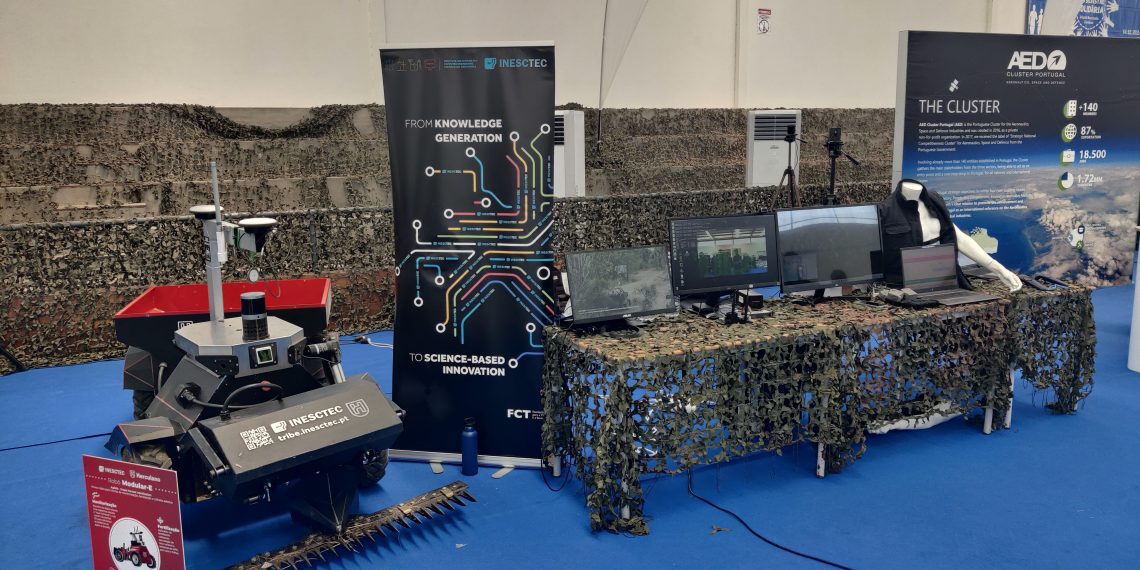What if an Army training air base became a test site to receive, over 20 days, cutting-edge technological solutions developed by institutions throughout the country? This was exactly what happened in the second edition of the ARTEX (Army Technological Experimentation) exercise, between June 17 to July 5, 2024; once again, INESC TEC participated in this event, which took place at the Santa Margarida Military Camp (Constância).
The goal was to foster the connection between the Portuguese Army, the entities of the Scientific and Technological System, and Tech-Based Industrial Defence institutions, contributing to R&D activities and promoting the Defence economy at the national level. For the second consecutive year, ARTEX brought together important technological solutions – with potential military application – in the development phase.
INESC TEC joined this event yet again, showing innovative technologies and solutions with a significant impact in the sector.
According to António Gaspar, Business Developer at INESC TEC, this is an “opportunity provided by the Army to test solutions in military operational environments, allowing us to adapt our R&D results to this area of application”. Moreover, it increases recognition, “not only concerning the Army and Armed Forces in general, but also the entire Defence and National Security ecosystem, favouring new opportunities for collaboration with institutions and companies”.
Using a Human-Machine symbiosis system for search and rescue situations is, at INESC TEC, a daily exercise that “consists of a set of technologies that allow an agent to perform certain field operations and work collaboratively with a machine”, explained INESC TEC researcher Vítor Minhoto. During the event, the Institute showcased a drone and the communication process between this solution and the operator.
“This is done by collecting physiological signals from a specific person and including them in the drone control loop. This way, the drone will, throughout its mission, have an internal representation of the psychophysiological state of said individual; in case there’s any change, it will be able to help without need to send any command to the machine”, stated the researcher. The system developed by INESC TEC consists of a set of wearable sensors that the military personnel will be able to use and measure the cardiac and respiratory signals, as well as body temperature, ambient temperature, concentration of gases and particles in the environment, luminosity, and other indicators. Vítor Minhoto ensured that “these measurements are then included on an IoT system where a smartphone communicates with the sensors, aggregates this information and sends it to a ground control station (GCS) that controls the drone according to the mission and the state of the person involved. This infrastructure has been designed to be scalable and it is possible to include several machines, sensors and people”.
In addition, “we also developed an information system representing the position of the military personnel in real time throughout the operation – specifically for the event”.
Modular-E is a fully autonomous and electric robot developed by INESC TEC to operate in agricultural environments, capable of carrying out cutting and fertilisation operations autonomously. André Aguiar, INESC TEC researcher, said that, in this case, “Modular-E was tested and validated while carrying out logistical support operations for troops in an autonomous and teleoperated manner” i.e., transporting ammo and fuel (for refuelling processes), as well as wounded individuals.
The robot was used in two phases during the event. The first included tests to understand the robot’s potential to support army corps in military contexts. As to the second stage, and according to the researcher, “the robot participated in a military exercise, operating for three days (more than 20 hours) with the military force responsible for resupplying troops and transporting the wounded”.
During the latest edition of ARTEX, INESC TEC researcher Fernando Cassola Marques presented the VR Training project, “which consists of an immersive platform using virtual reality glasses for training, maintenance and industrial certification”, he explained. It is a platform easily adaptable to any training scenario – which, in this specific case, “allowed testing two scenarios: one, it ensured that army mechanics could experience the mechanical maintenance of military vehicles; and two, it acted as a training solution for the maintenance of various military equipment, weapons, ammunition, etc.”, he stated.
“The presence of INESC TEC in this type of event is crucial, since it allows research work to have a practical and applicable meaning in almost real scenarios”, mentioned the researcher, who believes that the dimension and specificity of the event provide “an excellent scenario to tests and foster research, advancing technologies and helping them become increasingly diverse, updated and relevant”.
ARTEX is promoted by the Army’s Experimentation and Technological Modernization Center (CEMTEx); this year’s edition welcomed 32 technological solutions, tested in a real environment.
The researchers mentioned in this news piece are associated with INESC TEC.



 News, current topics, curiosities and so much more about INESC TEC and its community!
News, current topics, curiosities and so much more about INESC TEC and its community!